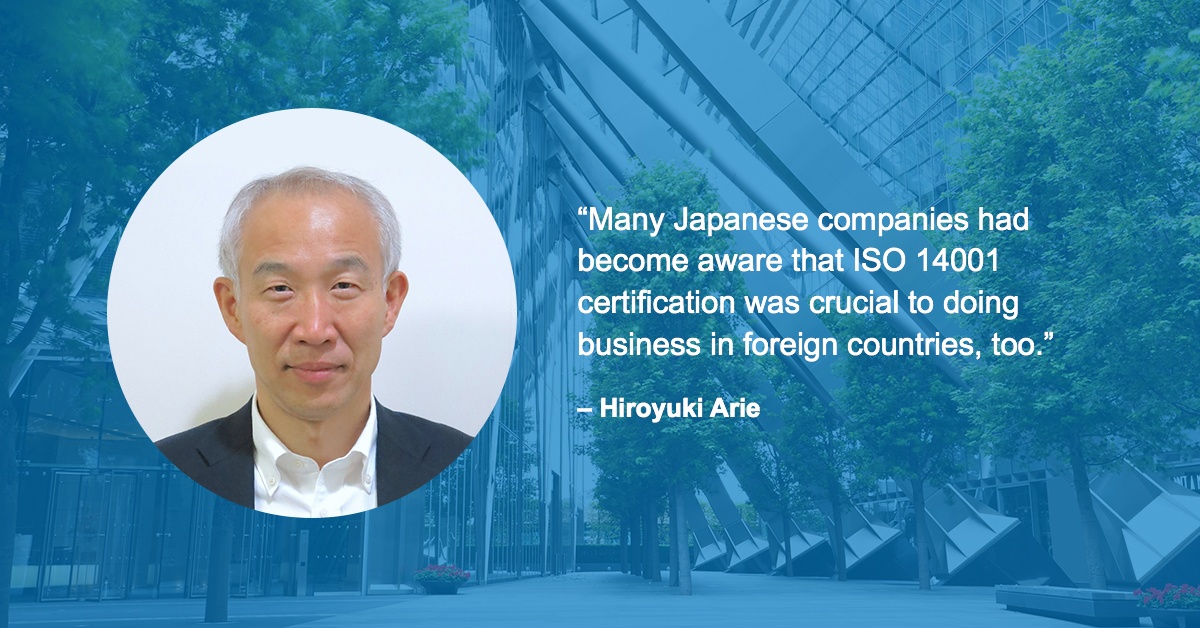
Twenty years have passed since the 1996 establishment of ISO 14001, the standard for environmental management systems (EMSs). By now, there are over 25,000 ISO 14001-certified organisations in Japan. This is second only to the number in China, and demonstrates that the concept of the environmental management system has deep roots in the country.
The reason for this extensive spread of ISO 14001 certification was that many Japanese companies had been making strenuous efforts to respond to growing worldwide awareness of the importance of the environment and had become aware that ISO 14001 certification was crucial to doing business in foreign countries, too.
In contrast, back in 1987 when ISO 9001 first came into effect, many manufacturing companies in Japan showed little interest in this quality management system standard. This was partly because many Japanese companies at that time were complacent about the quality of their own products, manufactured under Japan’s existing Total Quality Control (TQC) system.
The number of ISO 9001-certified organisations in Japan did not increase, and Japan fell behind the worldwide quality management trend. Learning their lessons from this failure with ISO 9001, Japanese manufacturing companies decided to lead the world in obtaining ISO 14001 certification.
EMS Standards Other Than ISO 14001
Although ISO 14001 is the most popular EMS standard in Japan, there are also some EMS standards that were created here in Japan, including Eco Action 21 (EA21) and the Kyoto Environmental Management System Standard (KES). They are basically intended for use by small and medium-sized enterprises. These standards are simpler and less expensive to apply than ISO 14001, and this facilitates the third-party certification of smaller businesses.
EMS Standards in the Future
What more must be done to make the environmental management system of organisations even more ecologically and economically responsive? One point is to shift the focus from the implementation of environmental management at individual worksites, including factories, to company-wide strategic planning processes and to the top management levels.
The revised ISO 14001:2015 standard requires top management to make environmental management a recognised strategic planning factor within their organisation. It could be said that environmental management is reaching a major turning point, from its role in preventing environmental pollution to one that defines the growth strategy of the organisation.
This article first appeared on JapanIndustryNews.com. Click here to read the full article.
For more information, speak with our experts:



